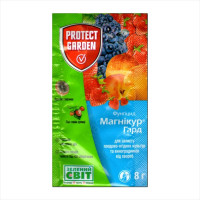Bob Mung, Mash, mung bean / Vigna radiata
This is a leguminous crop originating from India. The beans are small, green, oval in shape. The term "mung" comes from the Hindi language. Mung beans belong to many species that have relatively recently ceased to be included in the biological genus Beans (Phaseolus), and are separated into a separate genus Vigna. Therefore, they are sometimes also referred to as golden beans (Phaseolus aureus) or Phaseolus radiatus. All these names refer to the same plant species.
Cultivation of mung beans
The best place to plant mung beans is in soil that can hold a lot of moisture, which is essential during germination, flowering and bean set. Suitable for them and drained peat soil. Light sandy soil may also be suitable if there is the possibility of watering them and if they are well fertilized and do not have loose, easily permeable subsoil, but the beans also do not tolerate stagnant water. When growing beans, the best predecessors for them are: potatoes and cabbage. It is not recommended to grow beans in the old place, not earlier than after 4-5 years, to reduce the risk of disease.
Plowing should be carried out in autumn, the depth of plowing is 20-22 cm, the root system of the beans penetrates deep into the subsurface layer). Presowing tillage for beans is the same as for peas: harrowing to cover moisture, then cultivation with simultaneous harrowing in 1-2 tracks.
Beans can well absorb phosphorus from sparingly soluble phosphorus fertilizers. Phosphorite flour is applied in the fall at the rate of 50-60 grams per 1 m2, but it is even better to use it when laying composts. When composting, 15-20 kg of phosphate rock is added to 1 ton of manure.
Mineral fertilizers are also applied by pre-sowing cultivation: boron-magnesium fertilizers 10 grams per 1 m2, superphosphate 30-40 grams, potassium salt 10-15 grams, microelements can also produce a significant increase in yield.
Mung bean is a plant that needs to be sown early, so it is advisable to choose an area that clears snow early. Beans are long day plants. They are undemanding to heat - they germinate at 2-5°C. Seedlings tolerate frosts down to minus 4 ° C. Under favorable conditions, seedlings begin to appear on the 10-17th day after sowing. The best temperature for flowering and fruiting is 15 to 20°C.
With late sowing, seedlings are unfriendly, sparse, plants are more affected by diseases and pests. Beans are sown in a wide-row single-line method with row spacings of 40-45 cm or in a two-line tape method with distances between lines of 20 cm and between tapes of 45 cm. The seed from the seed in a row is laid out after 8-10 cm. with other plants. In the second case, aphids are less affected. On average, 10-35 grams of seeds are consumed per 1 m2, with a planting depth of 6-8 cm.
Mung bean care
In dry weather during sowing, at the end of it, the soil should be rolled. Reservation must be carried out 3-4 days after sowing (it will not allow the formation of a soil crust and for weed control). 5-7 days after the first. Harrowing on seedlings should be carried out across or at an angle to sowing in the afternoon, since at this time the plants are less fragile.
The use of mung beans in cooking
Mung beans are actively used in Chinese cuisine, in which they are called: green bean, as well as in the cuisines of Tajikistan, Uzbekistan, Japan, Korea, India and Southeast Asia. Mung beans are usually eaten whole, shelled or sprouted. Mung bean starch is used for gelling and specialty noodles.
In Uzbek and Tajik cuisine, a dish called mash-kichiri, or shavla-mash, is known, which is a vegetarian pilaf (or porridge) made from a mixture of rice and unshelled Mash using vegetable oil. The name itself appears to be of Indian origin.
Shelled mung beans (after removing the green shell) are light green in color and are known in Indian cuisine as dal, or dhal. From dal, in particular, they prepare a traditional Indian dish, also called dhal, produce pasta (often used as a filling), desserts, as well as the main dish of Ayurvedic cooking - kitchari.
Mung bean sprouts are a typical ingredient in Asian cuisine. They are often also referred to as soybean sprouts. Mung beans germinate easily within a day (under the right conditions).

No questions about this product, be the first and ask your question.











